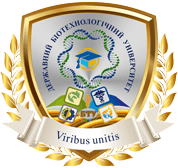Вплив системи тренінгу, що спрямована на підвищення стресостійкості, на економічну ефективність підготовки спортивних коней
Анотація
Метою даної роботи було визначити економічну ефективність застосування комплексу прийомів для підвищення стресостійкості коней під час участі у змаганнях та показових виступах.
Результати проведених досліджень дозволяють рекомендувати застосування прийомів, що розроблені для підвищення стресостійкості в системі тренінгу коней з метою підвищення результативності участі у змаганнях і зменшення витрат на кожен успішний старт.
Завантаження
Посилання
Azizov, S. P., Kaninskyi, P. K., & Skupyi, V. M. (2001). Orhanizatsiia vyrobnytstva i ahrarnoho biznesu v silskohospodarskykh pidpyiemstvakh. Kyiv. [In Ukrainian]
Bartolomé, E., Sánchez, M. J., Molina, A., Schaefer, A. L., Cervantes, I., & Valera, M. (2013). Using eye temperature and heart rate for stress assessment in young horses competing in jumping competitions and its possible influence on sport performance. Animal : an international journal of animal bioscience, 7(12), 2044–2053. https://doi.org/10.1017/S1751731113001626.
Covalesky, M. E., Russoniello, C. R., & Malinowski, K. (1992). Effects of show-jumping performance stress on plasma-cortisol and lactate concentrations and heart-rate and behavior in horses. Journal of equine veterinary science, 12(4), 244-251. https://doi.org/10.1016/S0737-0806(06)81454-1.
Cravana, C., Medica, P., Ragonese, G., & Fazio, E. (2017). Influence of training and competitive sessions on peripheral β-endorphin levels in training show jumping horses. Veterinary world, 10(1), 67–73. https://doi.org/10.14202/vetworld.2017.67-73.
Fazio, F., Messina, V., Casella, S., Giannetto, C., Marafioti, S., & Piccione, G. (2012). Effect of a simulate show jumping competition on the blood gas profile of horses trained for show jumping. Turkish journal of veterinary & animal sciences, 36(3), 259-265. Retrieved from http://citeseerx.ist.psu.edu/viewdoc/download?doi=10.1.1.991.3368&rep=rep1&type=pdf.
Ferlazzo, A, Fazio, E, Cravana, C, & Medica, P. (2018). The Role of Circulating beta-endorphin in Different Stress Models in Equines: A Review. Journal of equine veterinary science, 71, 98-104. https://doi.org/10.1016/j.jevs.2018.10.012.
Gregic, M, Baban, M, Bobic, T, Gregic, S, Kucevic, D, & Gantner, V. (2018). Show jumping horses' adaption to the training over the racing season. Journal of central european agriculture, 19(4), 906-911. https://doi.org/10.5513/JCEA01/19.4.2333.
Ilchuk, M. M., & Ishchenko, T. D. (2006). Pidpyiemnytska diialnist ta ahrobiznes: Kyiv. [In Ukrainian]
Jastrzebska, E., Wolska, A., Minero, M., Ogluszka, M., Earley, B., Wejer, J., & Gorecka-Bruzda, A. (2017). Conflict Behavior in Show Jumping Horses: A Field Study. Journal of equine veterinary science, 57, 116-121. https://doi.org/10.1016/j.jevs.2017.07.009.
Kupczynski, R., Spitalniak, K., Zwyrzykowska-Wodzinska, A., & Soroko, M. (2018). The influence of different workload trainings on some blood parameters in show jumping horses. Veterinarski arhiv, 88(3), 279-293. https://doi.org/10.24099/vet.arhiv.170513.
Negro, S., Bartolomé, E., Molina, A., Solé, M., Gómez, M. D., & Valera, M. (2018). Stress level effects on sport performance during trotting races in Spanish Trotter Horses. Research in veterinary science, 118, 86–90. https://doi.org/10.1016/j.rvsc.2018.01.017.
Rietbroek, N. J., Dingboom, E. G., Joosten, B. J., Eizema, K., & Everts, M. E. (2007). Effect of show jumping training on the development of locomotory muscle in young horses. American journal of veterinary research, 68(11), 1232–1238. https://doi.org/10.2460/ajvr.68.11.1232.
Sapozhnikova, O. G. (2001). Vlijanie stressovyh situacij na organizm sportivnyh loshadej i razrabotka metodov ih korrekcii. (Dis. kand. tehn. nauk). «Stavropol'skij gosudarstvennyj agrarnyj universitet», Stavropol'. [In Russian]
Savchuk, V. K. (1995). Analiz hospodarskoi diialnosti silskohospodarskykh pidpryiemstv. Kyiv. [In Ukrainian]
Sommer, L. H., Munk, R., Nielsen, S. M., & Lindner, A. (2015). Training of Horses Used for Show Jumping. Journal of equine veterinary science, 35(4), 301-308. https://doi.org/10.1016/j.jevs.2015.01.021.
Suwala, M., Gorecka-Bruzda, A., Walczak, M., Ensminger, J., & Jezierski, T. (2016). A desired profile of horse personality - A survey study of Polish equestrians based on a new approach to equine temperament and character. Applied animal behaviour science, 180, 65-77. https://doi.org/10.1016/j.applanim.2016.04.011.
Valera, M., Bartolome, E., Sanchez, M. J., Molina, A., Cook, N., & Schaefer, A. (2012). Changes in Eye Temperature and Stress Assessment in Horses During Show Jumping Competitions. Journal of equine veterinary science, 32(12), 827-830. https://doi.org/10.1016/j.jevs.2012.03.005.
Vincze, A., Szabo, C., Veres, S., Uto, D., & Hevesi, A. T. (2017). Fitness improvement of show jumping horses with deep water treadmill training. Veterinarni Medicina, 62(4), 192-199. https://doi.org/10.17221/135/2016-VETMED.
Visser, E. K., van Reenen, C. G., van der Werf, J. T., Schilder, M. B., Knaap, J. H., Barneveld, A., & Blokhuis, H. J. (2002). Heart rate and heart rate variability during a novel object test and a handling test in young horses. Physiology & behavior, 76(2), 289–296. https://doi.org/10.1016/s0031-9384(02)00698-4.
Williams C. A. (2016). The effect of oxidative stress during exercise in the horse. Journal of animal science, 94(10), 4067–4075. https://doi.org/10.2527/jas.2015-9988.
Переглядів анотації: 1212 Завантажень PDF: 596





